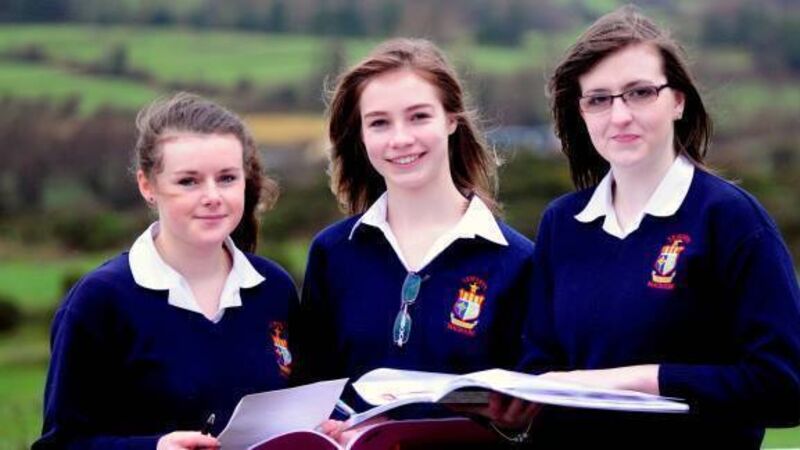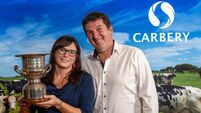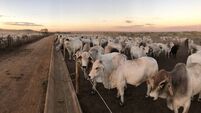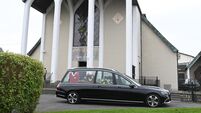Young Scientists turn to the farm for inspiration

With the Young Scientist event beginning next week in the RDS in Dublin, there was simply no time for goofing around. There was no rest for Ireland’s budding young scientists.
Yet again, there will be plenty exhibits with a farming flair.
Firstly, a big issue from the very beginning of 2013: The horsemeat scandal. Ellen Tighe and Maia Travers, transition year students from Magh Ene College, Bundoran, Co Donegal, conducted an investigation into the impact the fiasco had on consumer purchasing behaviour.
The students confined their survey to the north-west, in Bundoran; Sligo town; and Carrick-on-Shannon, Co Leitrim. They surveyed at three stores in each town; a butchers and two supermarkets (one of them a discount supermarket).
A total of 172 responses were collected. All respondents said they had heard of the horsemeat scandal, and 40% of people surveyed in Sligo and 56% of those in Leitrim said they will now only buy processed meats from butchers; 30% of the consumers in Sligo and 55% of those in Leitrim reported that their shopping practices with regard to processed foods had not changed as a result of the horsemeat scandal.
The students also found that 53% of consumers in Sligo and 25% of those in Leitrim now buy less processed food, such as frozen burgers.
The main reasons given by participants for their reduced purchasing of processed foods were as follows: 35% in Sligo and 33% in Leitrim were concerned about what could be in the food; 28% in Sligo and 33% in Leitrim had health concerns; 24% in Sligo and 11% in Leitrim were concerned about food being mislabelled; 12% in Sligo and 22% in Leitrim were concerned about the country of origin.
The students from Magh Ene College received help with the project from Dr Sophie Hieke of the European Food Information Council; Niall Friel, associate professor in statistics at the School of Mathematical Sciences, University College Dublin; and Aine Regan, PhD research student at the School of Public Health & Population Sciences, University College Dublin.
The full results will be available to view at the BT Young Scientist competition next week.
* Next, we turn to music, and an interesting experiment by three transition year students at Presentation Secondary School, Thurles, Co Tipperary. Louise McCormack, Laura Quigley, and Claire McCormack carried out an investigation into a bovine’s love of music.
Carrying out a survey at last September’s Ploughing Championships, they asked farmers if music was a big part of the dairy farmer’s life, and 33% admitted that they milked cows to music, while 57% said they knew of a farmer who would have music in the milking parlour.
Louise McCormack said: “It was a much larger percentage than we had expected.”
Armed with these findings, the young scientists took their project further.
Tipperary dairy farmer Aidan Power, who has switched to Lely robotics for his milking in recent times, was most agreeable to let the students use his herd for their project. So the girls got to work.
Their experiment on Aidan’s farm lasted three weeks.
“The first week was the control week, so we played no music that week,” Louise explained. “On the second week, we switched to classical music, playing it for 24 hours a day. And on the third week, we played electronic music.”
Originally, the students had planned only to see if the music had an influence on milk production. However, before long, with the help of Aidan, they were broadening their scope.
Butterfat levels, protein, and somatic cell count were among other things that were looked at.
Overall, the students found that the milk production per day increased when music was played.
And milk production would be higher again when classical music was played.
So if you are running a little over quota this year, switch off the Beethoven in the milking parlour.
nBT Young Scientist Maille Cronin of Coláiste Muire, Crosshaven, focused her attention on hens.
Maille’s project set out to determine which hens are laying in a free-range poultry farm, using wireless sensor technology.
When I spoke to Maille the week before Christmas, she was still working hard on getting definitive results.
The idea for the project began when Maille got four hens last summer. They took weeks to start laying and only one egg appeared sporadically.
It made her ponder on which hen was laying, and how you might find out.
When she researched the subject, she found it was not an easy problem to solve. And when Maille checked with local egg producers, they said all eggs can be traced back to a henhouse but not to an individual hen.
Maille has been looking at using wireless temperature sensors to see if there is any physiological change (such as a temperature spike) when the hen lays an egg. She bought a small, light wireless temperature sensor from Texas Instruments, and hung it around the hen’s neck. This sensor relays information back to her iPhone.
She observed the daily routines of her hens, and found that each hen had her individual routine, including entry into the chicken coop.
The week before Christmas, she was monitoring their movements with an automatic bar code scanner that she bought on Amazon.
Maille also bought a USB temperature data logger and used this in the laying box to measure temperature changes, as eggs are warm when they are first laid.
So lots of work done there by Maille, and again her findings will be on show in the RDS.
* Next we turn to Barry Mohan and Darragh Matthews of the Patrician High School, Carrickmacross, Co Monaghan. The pair will be telling all about their ‘animal caring unit’ at next week’s competition.
Their well-engineered livestock weighing crate also contains an automatic dosing arm, footbath, and a heat detection unit.
The crate, the students claim, will allow the user to carry out three important roles at once.
Barry Mohan explains the background to the creation.
“Darragh thought of the idea when he saw the hassle of dosing cattle. He thought there must be another way. And over time, we added on other features such as a footbath.”
Darragh comes from an agricultural background, and Barry has a keen interest in agricultural matters.
When the animal enters the crate, it is weighed by load cells at the base. The base of the crate also contains a footbath which sprays medication or disinfectants to prevent hoof problems.
After weighing, the sides of the crate close in to centre and secure the animal. When the animal is secure, the dosing arm administers the correct amount of dose for the animal’s weight.
A serious piece of equipment there from the Monaghan students.









